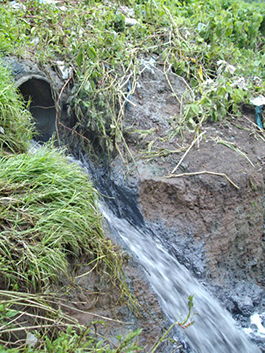4.3.2 Manufacturing and industrial plants
In Study Session 1 you read about some of the ways in which water is used in industry and manufacturing. The range of different uses and processes can produce waste in the form of many different types of organic and inorganic material in suspension or in solution. In many cases, much of the water used can be recycled but there is almost always an effluent discharge that requires treatment.
Food processing generates large volumes of effluent containing natural organic compounds such as carbohydrates, proteins and fats. Factories producing chemicals often generate low volumes of highly toxic waste streams. Toxic effluents can also be produced in the paper, leather and electroplating industries. For example, cyanides and heavy metals may be present in wastewaters from electroplating. These plants can also be the source of highly acidic wastes.
Manufacturing and industrial effluents should be treated at their points of origin but many production plants in Ethiopia (such as tanneries and breweries) do not have proper effluent treatment systems. This results in the discharge of untreated or partially treated effluent into the nearest water body (Figure 4.7).

4.3.1 Human excreta
